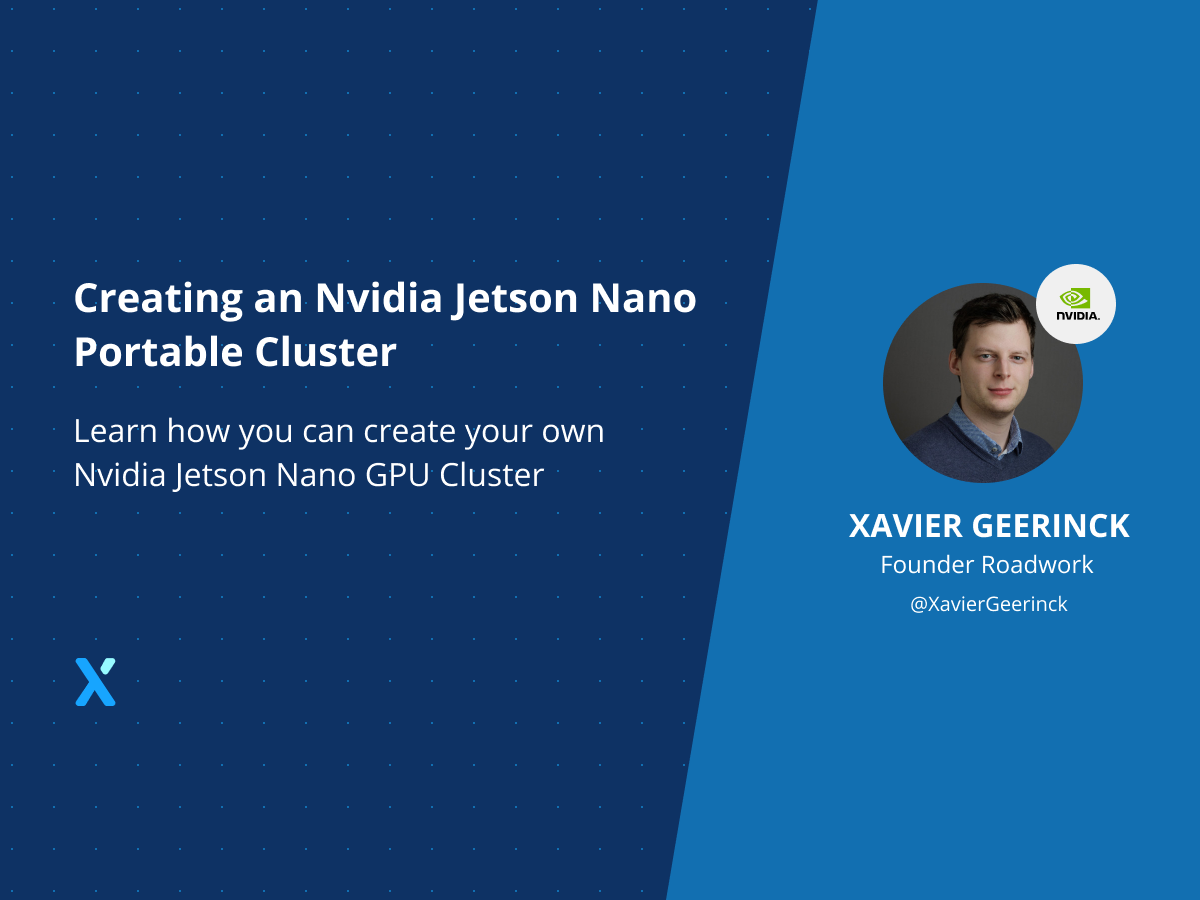Creating an Nvidia Jetson Nano Portable Cluster

In my previous article I explained how we can get one single Nvidia Jetson Nano 2GB Node up and running. In this article I would love to go in more detail on how we can create a cluster.
Requirements
To create my cluster, I utilized the materials below:
Note: These requirements were created for 3 Nodes and receive internet through a Mobile Pocket router that can be put in Client mode to connect LAN over WiFi (very useful for portability).
- 3x Jetson Nano ~195 Eur Total
- 1x Switch ~19.95 Eur
- 1x Standoffs ~8.99 Eur
- 1x Mobile Router (it is end of life, but super cheap and still working!) ~34.15 Eur
- 4x 0.5m UTP Cables (I had those, but typically ~ 4eur for 4)
- 4x 0.3m USB C to USB A cables ~19.68 Eur
- 1x 6 port USB Hub ~18.87 Eur
- 4x 128GB SD Card ~58Eur Total (minimum should be 32GB)
Total Bill: 358.64 Eur (or 163.64 Eur without the Nvidia Jetsons)
While Assembling
To make efficient use of our time, we can flash the SD Cards with the Operating System as explained before. They take around 20 minutes each.
Assembling
While the SD Cards are flashing, we can get started with assembly! This is quite straightforward, so mount the nodes on top of the switch and connect them through the UTP cables. Then take the Mobile Pocket Router and connect that to the first port of the switch.




Once this is done, we can provide power by connecting the nodes and the mobile Router to our USB Hub. Finally, power on the switch and the USB Hub to get started!

Connecting to your Nvidia Jetson Nanos
Once the Nvidia Jetson Nanos have been set-up, you can quite easily detect them by installing Angry IP Scanner and scanning your home network. This will show the nodes and their respective IP Addresses.

Configuring Windows Terminal
As mentioned earlier, you can easily login on all the nodes through a shortcut and entering the command below:
CMD /C wt.exe wsl -d "Ubuntu-20.04" -- bash -c "ssh [email protected]"; split-pane -H wsl -d "Ubuntu-20.04" -- bash -c "ssh [email protected]"; split-pane -V wsl -d "Ubuntu-20.04" -- bash -c "ssh [email protected]"
Conclusion
With a small bill we have built our own GPU Cluster that has a combined 384 Cores and 1.416 TFLOPS! (which is similar to 1 Jetson TX2)




Comments ()